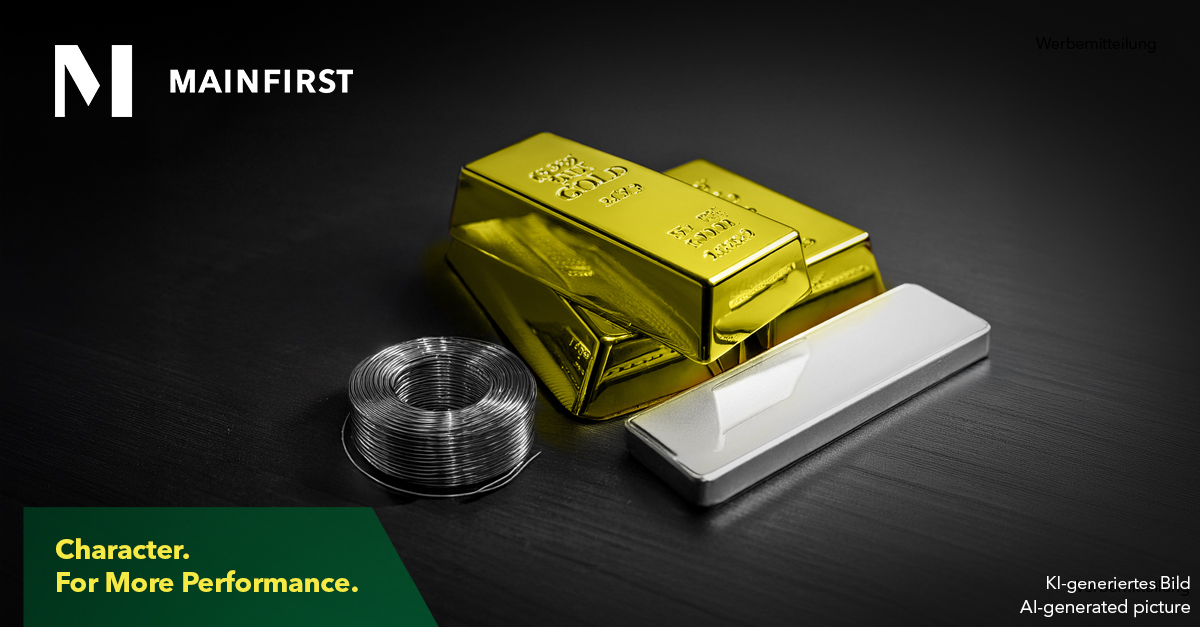A new commodity cycle is beginning – and most investors are still asleep. While tech stocks are trading near historic highs, a seemingly modest market is sending clear signals: gold has already embarked on its upward journey. Silver, copper, and others could follow – driven by geopolitical upheavals, a shift in interest rates, and growing physical scarcity. Those who fail to rethink their strategies now risk missing more than just one opportunity.
Gold – the historical pace-setter
In past market phases, gold has consistently proven to be a reliable early indicator. As a safe haven in uncertain times, it is deeply embedded in market psychology. But its role goes beyond that: gold has repeatedly marked the beginning of broad upward movements in the commodities sector.
This time, too, a striking development is visible. Since the start of the pandemic, gold prices have been rising – not in sudden leaps, but steadily. The ratio of commodity to equity market performance remains at historically low levels despite some recovery. In the past, similar phases often signaled the beginning of capital rotation – away from overvalued growth stocks and toward real assets such as commodities and precious metals.
A changed environment demands a rethink
The era of cheap money is over. Since interest rates began rising in 2021, the macroeconomic environment has fundamentally shifted. Inflation, geopolitical tensions, and volatile markets are forcing investors to reassess established allocation models.
In this new reality, traditional bonds are losing their shine – real returns are hard to calculate. Commodities, on the other hand, offer physical scarcity, inflation protection, and low correlation to other asset classes. Since the turn of the millennium, gold has proven itself as a long-term store of value – delivering stable, and in some cases strongly positive, real returns.
Asia is changing the rhythm
At the same time, global signals are emerging for a strategic revaluation of precious metals. In China, the importance of physical gold reserves is growing – as it is in Russia. Across Asia, real demand for precious metals is increasing, often with price premiums compared to Western markets.
These developments point to a geopolitically motivated reorientation. Precious metals are increasingly serving as strategic reserves – both for governments and institutions. This shift has long-term implications for demand, pricing, and the role of gold and silver in the international financial system.
Silver – the cyclical latecomer
While gold reacts early to major changes, silver has historically been a laggard. But once a commodity cycle is established, the metal often unleashes its full potential – frequently with high momentum. The current gold-to-silver ratio of over 100 is well above long-term averages. In previous cycles, this was a reliable starting point for outsized silver performance.
Adding to this is silver’s growing industrial importance: it is essential for technologies such as photovoltaics, semiconductors, sensors, and batteries. Structural demand is rising, while inventories at major commodity exchanges are hitting record lows. The market is tight – both fundamentally and in terms of price.
Early phase – strategic opportunity
Many market participants are still acting cautiously – a behavior typical of the early stages of cyclical movements. Fluctuations are often interpreted as trend reversals, even though in this market phase they are more the norm than the exception. Historically, it has often been those investors who built positions countercyclically in such moments that reaped above-average long-term gains.
A large portion of investors remain focused on past outperformers. But with capital rotation looming, commodities as a tangible asset class are regaining importance. In a world of multiple crises, physical assets become strategic anchors.
Copper, oil, and gas: more pieces of the cycle puzzle
Recently, copper has started to perform, not least due to announced 50% US import tariffs. This propelled copper to a new all-time high – until US President Donald Trump recently exempted certain copper imports from tariffs. As a result, copper prices in the US plunged by over 20% at the end of July. This drop was driven by the previously higher US price caused by the tariffs. In London, copper had never been traded at such high prices. Copper also tends to lag behind precious metals, which means prices may consolidate before rising again.
Oil and natural gas are also on the verge of consolidation. In the next phase, these too are likely to start their rallies. No significant commodity rally has ever occurred without a rise in oil prices. Many signs on the horizon point to an inflationary scenario in which commodities offer a safe, albeit volatile, haven.
Conclusion: Gold shows the way – silver offers leverage
The global economy stands at a turning point. The familiar patterns of stability – low interest rates, steady growth, monetary policy support – are under pressure. In this period of upheaval, both historical patterns and current developments argue for a revaluation of commodities.
Gold has long signaled the start of the move. Silver, supported by industrial demand and structural scarcity, could follow – with substantial catch-up potential.
The new commodity cycle may only be in its early stages. Those who act early not only gain tactical advantages but also position themselves for long-term success in a changing market environment.


